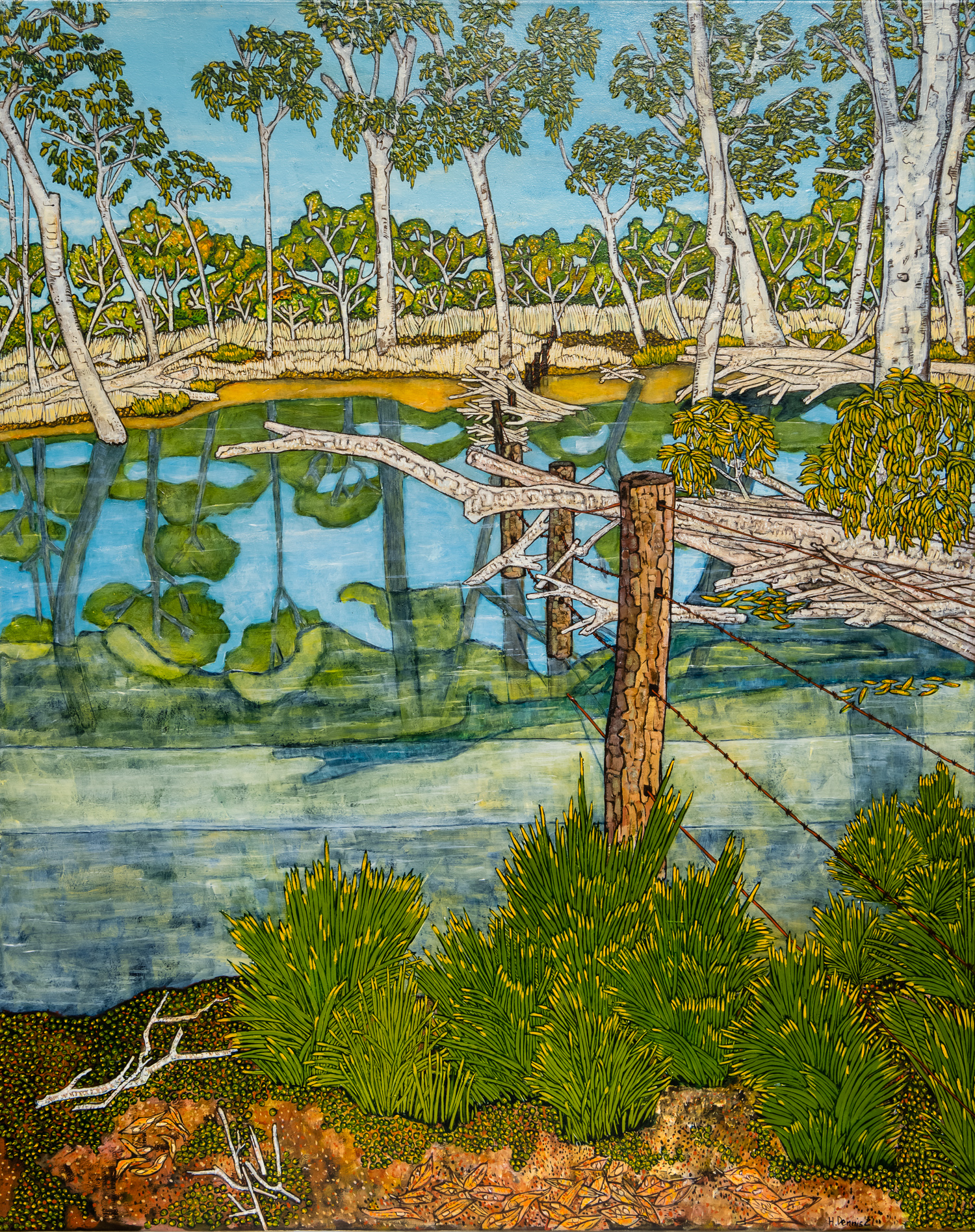

This artwork is available for purchase. Please contact the exhibiting gallery for details

The barbed wire fence provides a physical delineation from one farm to the next: a symbol of cultural change in land usage from Indigenous people to the European settler. Indigenous thought sees land as nurturer and provider of plenty; the realm of all. Cultural change brought the concept of ownership by one and an ignorance of the interactions of delicate ecosystems. In the last decades pathways back to a more traditional understanding of the land have emerged. One pathway in the Western Downs has been the highly successful Landcare Australia.
This complex and detailed work offers many levels of engagement and satisfaction to the viewer. At first glance, we enjoy the work as a description of a place. A grassy, green location, we feel the possibility of refuge from the sun’s glare and sense the cool respite in the reflective water. The patterns evident in the carefully depicted blades of grass, leaves and background tree branches set up hypnotic rhythms which guide the eye across the surface of the painting. The foreground grasses sway sensuously while leading our eye upward toward the striped rushes on the far bank. There, the repeated verticals of the gum tree trunks take command, directing the eye back down into the middle ground. The delicate and meticulous outlining of even the smallest elements depicted, along with the angle of the river banks and a band of tree reflections running across the composition, all serve to assert the dominance of the picture plane in the composition.
Running counter to the horizontality of the rest of the design, the barbed wire fence draws our eye back to the distant bank, working to establish depth in the scene.
Large in scale, the front post of the fence is central to the work both in design terms as the primary focal point, but also in terms of what it symbolises in the narrative embedded in the work. Although a seemingly insignificant structure, this man-made intervention in the landscape has snagged timbers along its length, interfering with the natural course of the water. A powerful symbol of the marks that human activities make upon the landscape, and of ideas around land ‘ownership’, this work is compelling in meaning and evocative in its depiction of a place.
Through her art Dennis seeks to narrate the story of rural Australia in a contemporary context. Regional Australian colours are featured in compositions created from multidimensional images and perspectives, integrating to create her unique perspective of the country.

